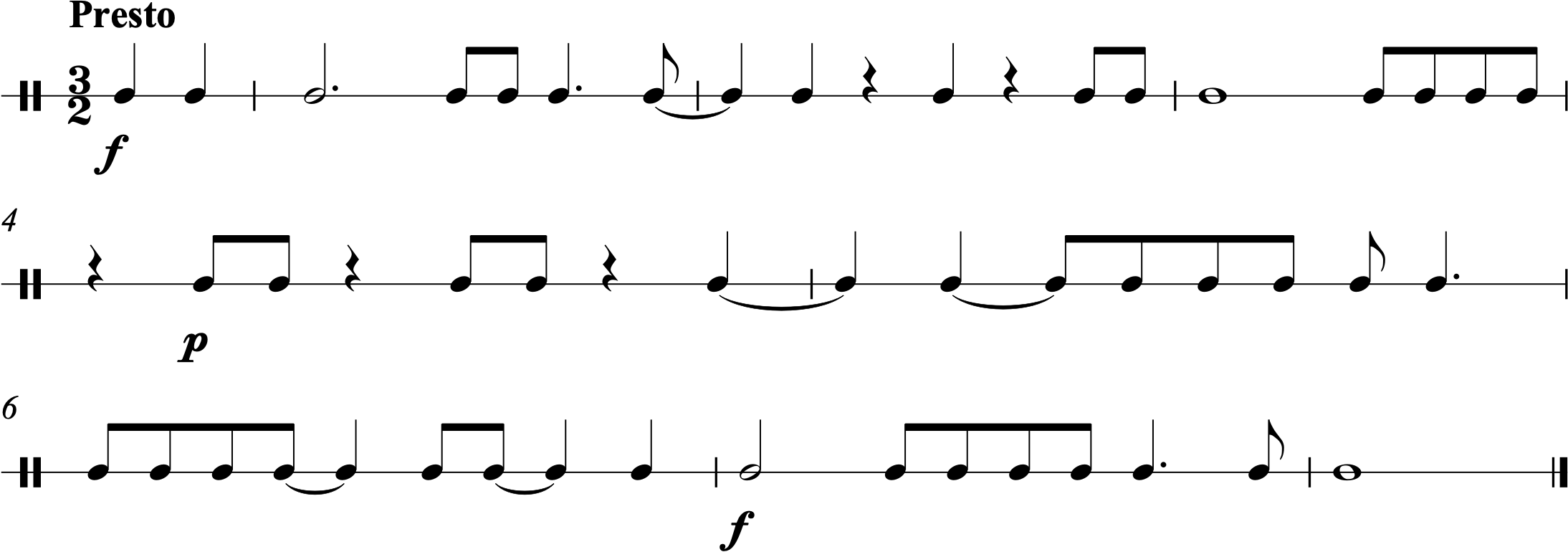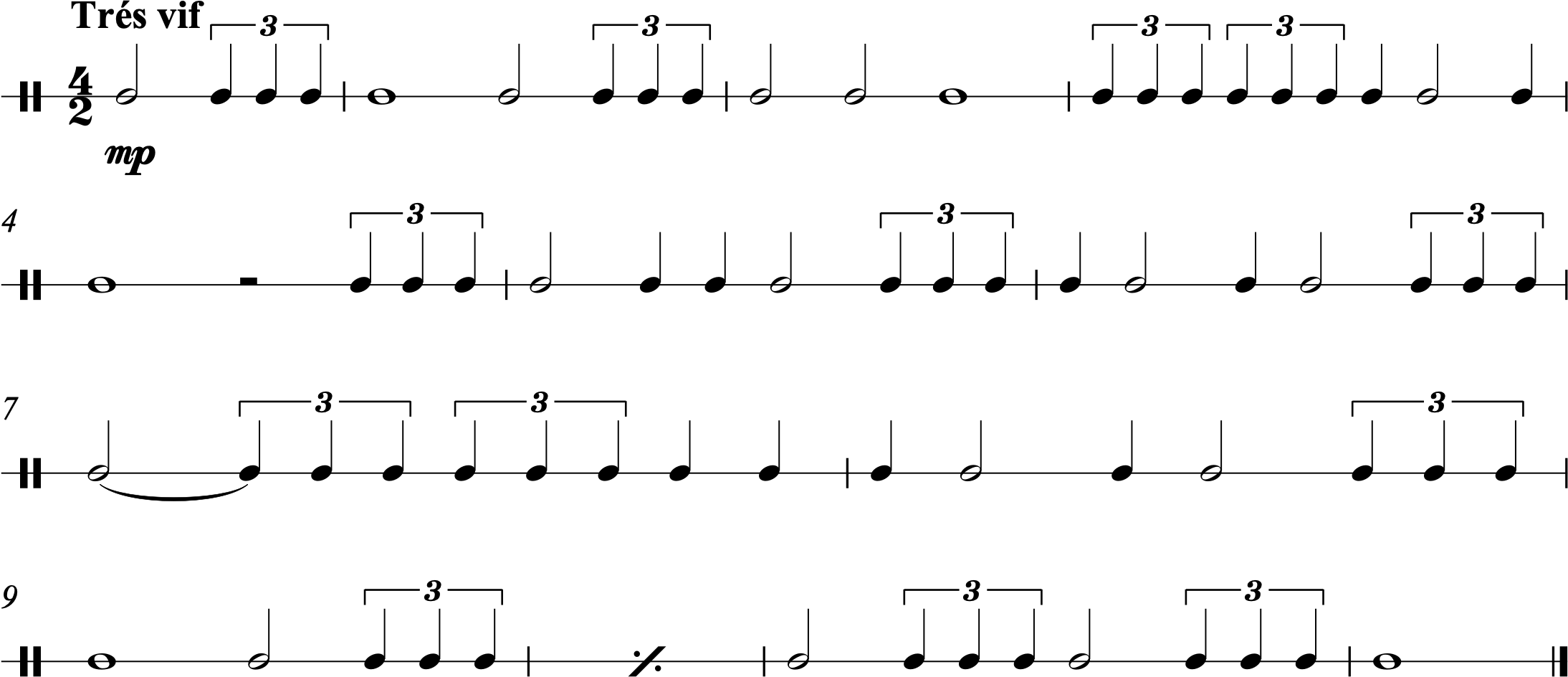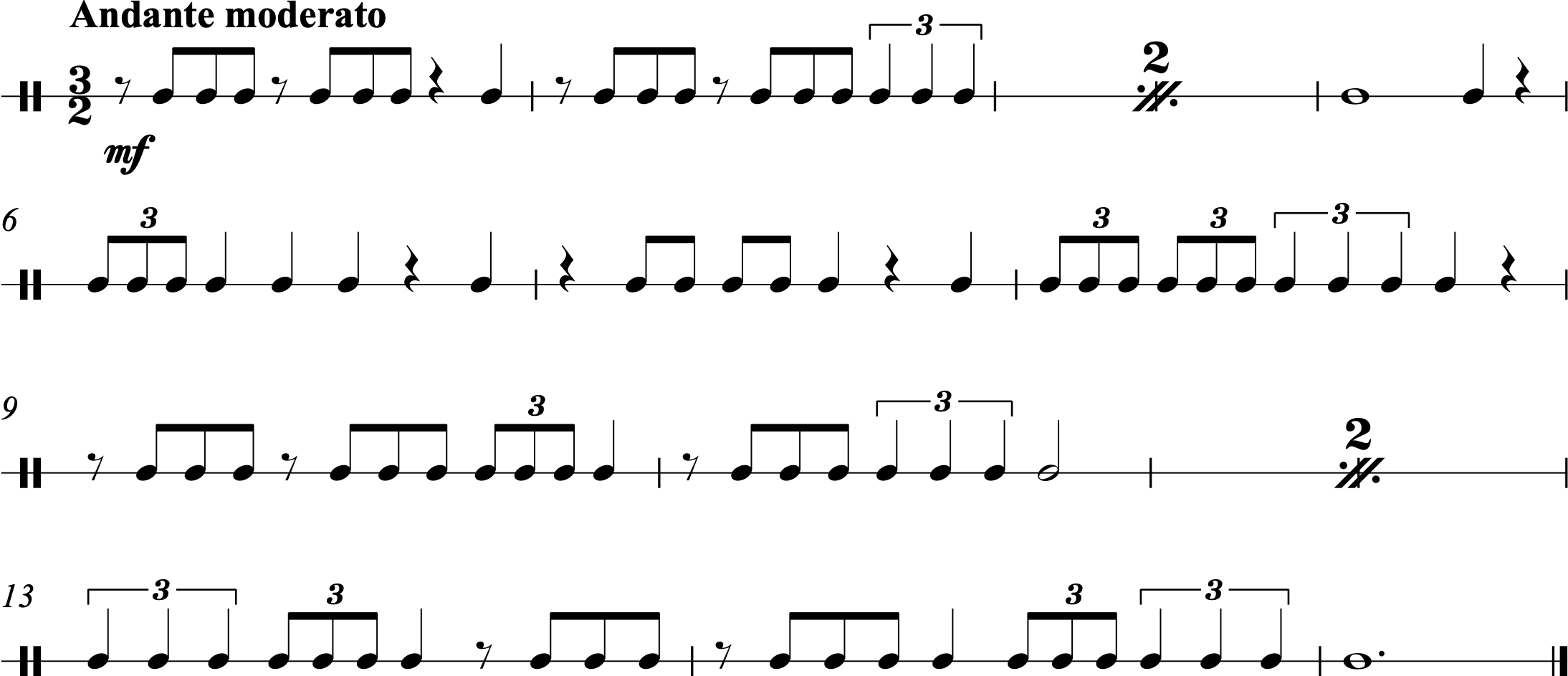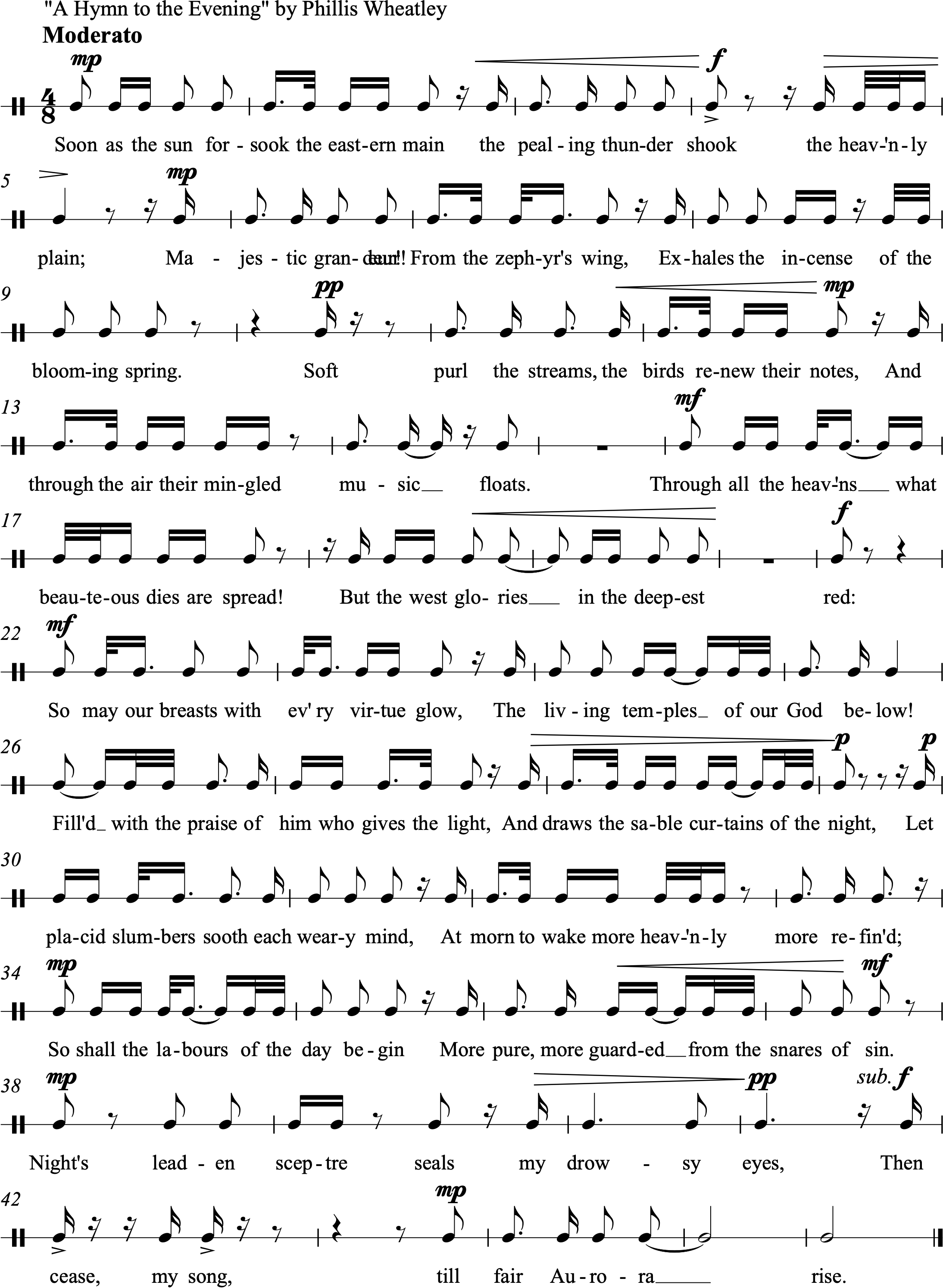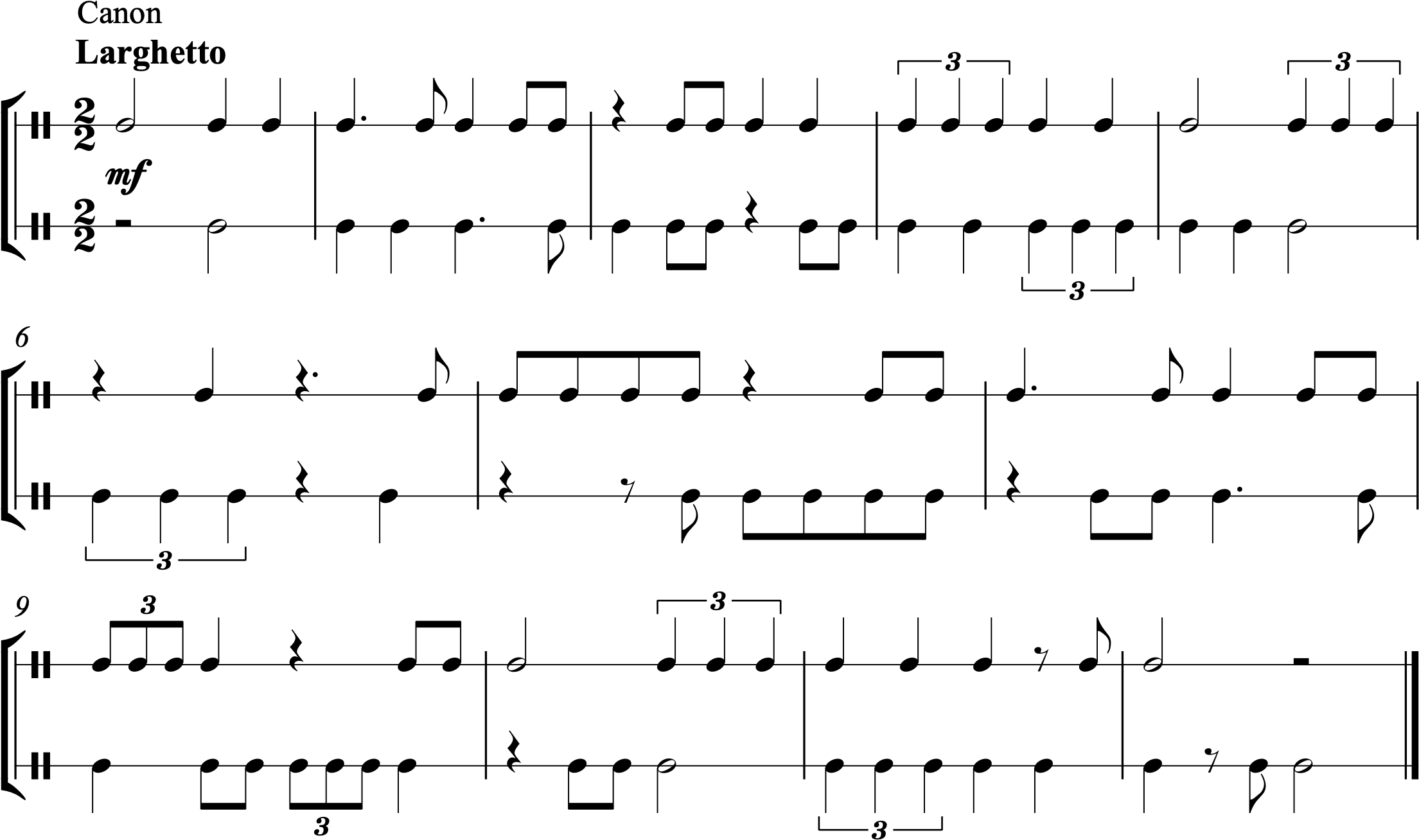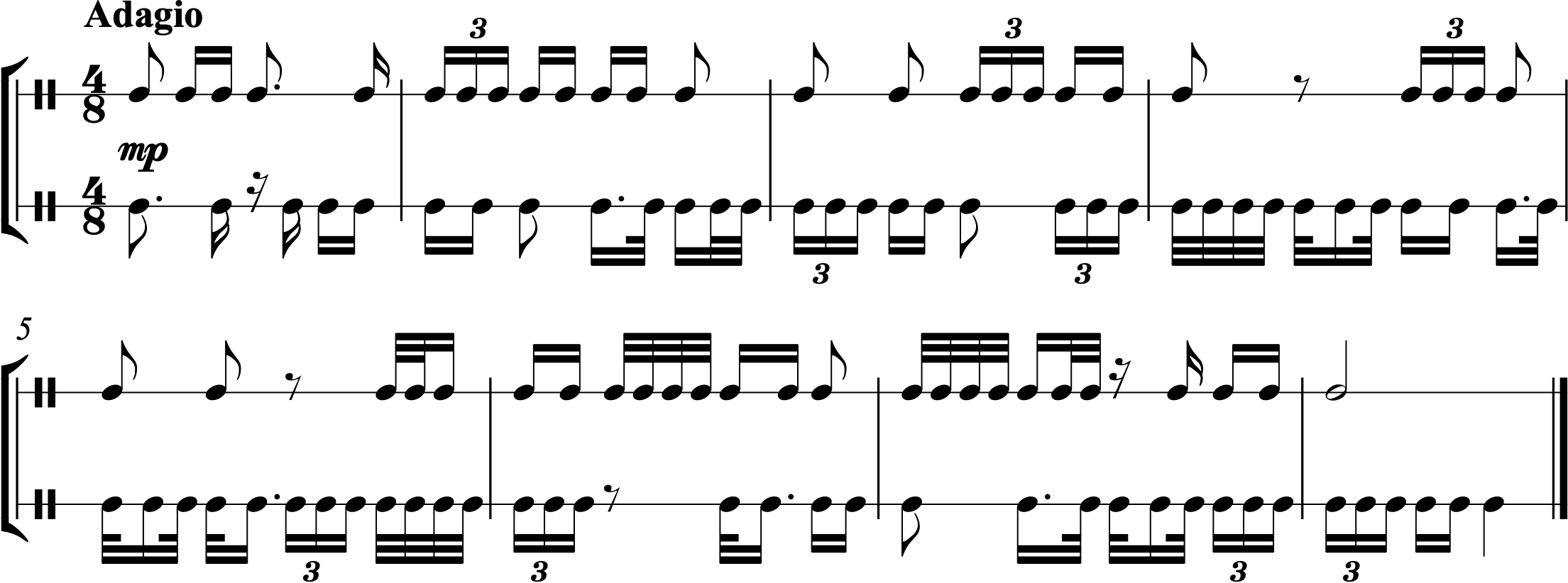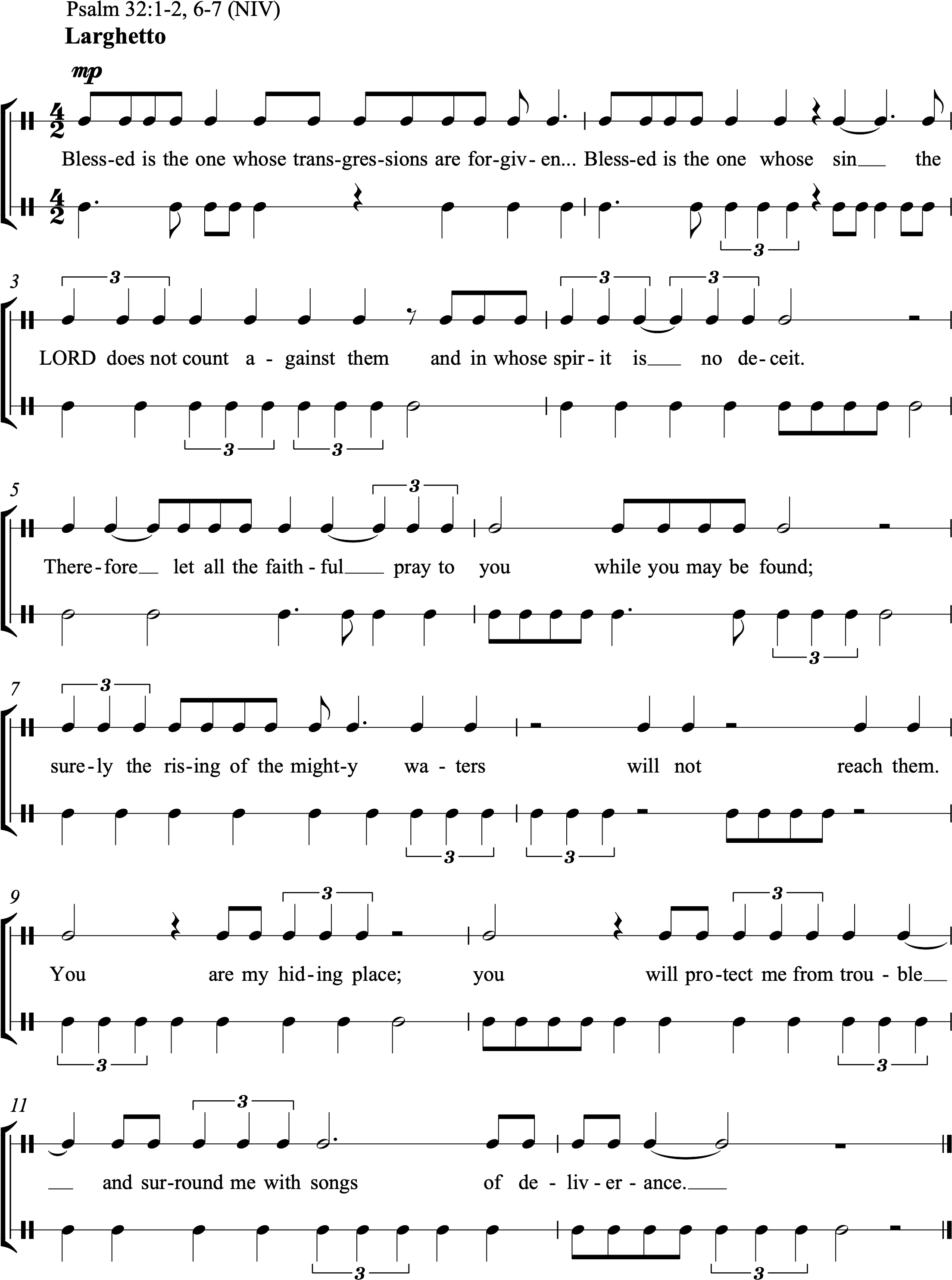Chapter 13: Simple Meter—beat values other than quarter notes
About This Chapter
About This Chapter: So far, whenever we’ve been in simple meter, you’ve seen a “4” on the bottom of the time signature, meaning that the quarter note is the beat. This is definitely the most common rhythmic value to use as the beat in simple meter, but it’s not the only possibility! In fact, any rhythmic value can serve as the beat. In this chapter, we’ll explore rhythmic values other than quarter notes serving as the beat in simple meters.
In the example below, all three measures sound identical—they’re just notated differently. Measure 1 looks the most familiar since it’s notated in 4/4. In measure 2, the 4/2 meter means that the half note is the beat (“1”), the quarter notes are the divisions (“2 &”), the quarter-note triplets are the division of a single beat into three parts (“3 la li”), and the eighth notes are subdivisions of the beat into four parts (“4 e & a”). In measure 3, the same rhythms appear in 4/8: the eighth note is the beat (“1”), the sixteenth notes are the divisions (“2 &”), the sixteenth-note triplets are the division of the beat into three parts (“3 la li”), and the thirty-second notes are the subdivision of the beat into four parts (“4 e & a”). Remember that the bottom number of the time signature tells us what rhythmic value is the beat in simple meters.
Before we perform the examples in this chapter, it’s important that we take a minute to think through what the time signature is telling us. We want to figure out what each rhythmic value is (beat, division, subdivision, etc.) and which rhythmic syllables to use for each. In the example below, measure 1 shows the correct way of interpreting the 4/2 time signature—as a simple quadruple meter with the half note as the beat. Measure 2, on the other hand, uses syllables that imply there are eight beats in the meter.
Section A—The half note as the beat
Practice
Practice A:
 Practice by performing along with this audio file, which features a metronome click and the notated rhythm. You will hear one measure of wood block to establish the tempo before the exercise begins.
Practice by performing along with this audio file, which features a metronome click and the notated rhythm. You will hear one measure of wood block to establish the tempo before the exercise begins.
Next, try performing along with this audio file, which features the notated rhythm but no metronome click. You will hear one measure of wood block to establish the tempo before the exercise begins.
1.
2.
3.
4.
Section B—The eighth note as the beat
Practice
Practice B:
 Practice by performing along with this audio file, which features a metronome click and the notated rhythm. You will hear one measure of wood block to establish the tempo before the exercise begins.
Practice by performing along with this audio file, which features a metronome click and the notated rhythm. You will hear one measure of wood block to establish the tempo before the exercise begins.
Next, try performing along with this audio file, which features the notated rhythm but no metronome click. You will hear one measure of wood block to establish the tempo before the exercise begins.
5.
6.
7.
8.
Section C—The sixteenth note as the beat
9.
10.
Section D—The whole note as the beat
11.
12.
Section E—More examples featuring beat values other than quarter notes
13.
14.
15.
16.
17.
18.
19.
20.
21.
22.
23.
24.
25.
26.
27.
28.
29.
30.
31.
32.
33.
34.
35.
36.
37.
Section F—Two-part rhythms featuring beat values other than quarter notes
38.
39.
40.
41.
42.
Rhythm in Context
“Dido’s Lament,” the final aria from Henry Purcell’s (c. 1659–1695) opera Dido and Aeneas, is notated in 3/2, a simple triple meter. You can hear the piece in the YouTube video below. Underneath that, you can see the score for the soprano soloist. As you listen, try performing along in one or more of the following ways:
- Speak the rhythm on a neutral syllable
- Speak the rhythm on the English text
- Speak the rhythm on rhythmic syllables
- Conduct a triple pattern while doing any of the above
Citations
Poem:
- Phillis Wheatley (1753–1784), “A Hymn to Evening,” public domain. From Poems on Various Subjects, Religious and Moral, published 1773, by A. Bell Bookseller, Aldgate, London.
Psalm:
- Scriptures marked “NIV” taken from the Holy Bible, New International VersionTM, NIVTM
- Copyright © 1973, 1978, 1984, 2011 by Biblica, Inc. Used with permission. All rights reserved worldwide. The “New International Version” is a trademark registered in the European Union Intellectual Property Office (EUIPO) and United States Patent and Trademark Office by Biblica, Inc. The “NIV”, “Biblica”, “International Bible Society” and the Biblica Logo are trademarks registered in the United States Patent and Trademark Office by Biblica, Inc. Used with permission.
Rhythm in Context:
- Henry Purcell (c. 1659–1695), Dido’s Lament from Dido and Aeneas, premiered 1689



















